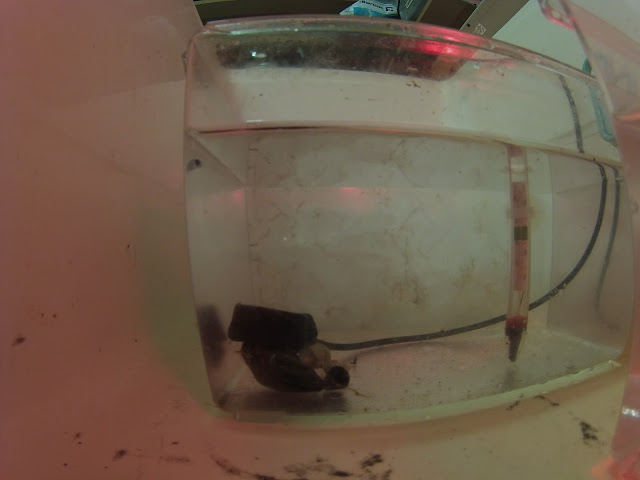I soon noticed another dogwhelk crawling up the side of the tank and heading directly toward the top where the dangling dogwhelk was attached. It then proceeded to push on the threads, causing the dangling whelk to bounce! Was this dogwhelk trying to free the dangling one? Here is the 8x speed footage!
I waited a long time for the scene to progress, but the helper dogwhelk didn't break the byssal thread and eventually crawled away. The dangling one wasn't able to grab anything on its own, so I pushed it over to the side of the tank where it held onto the wall, started crawling, and eventually broke the thread and freed itself.

